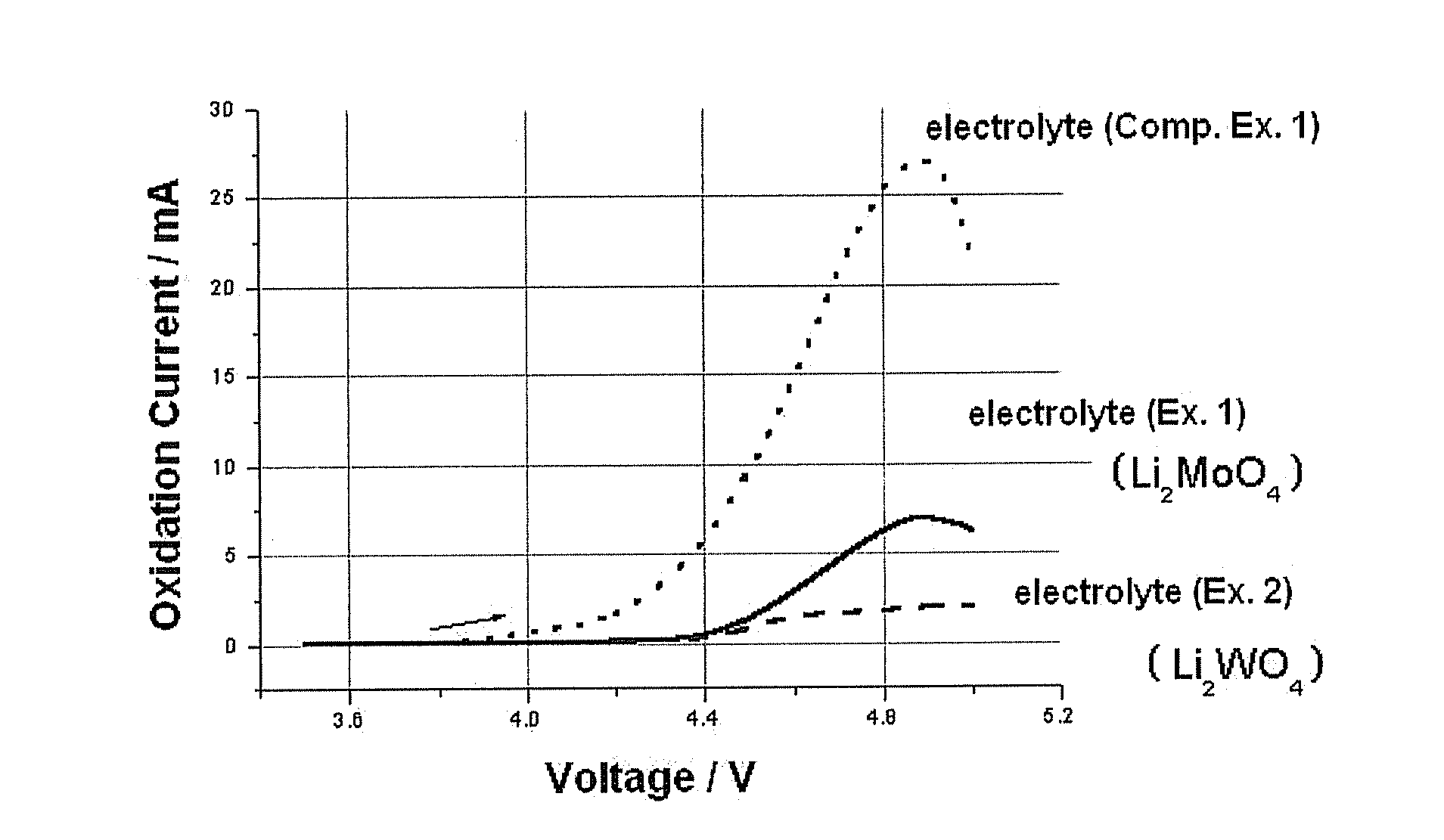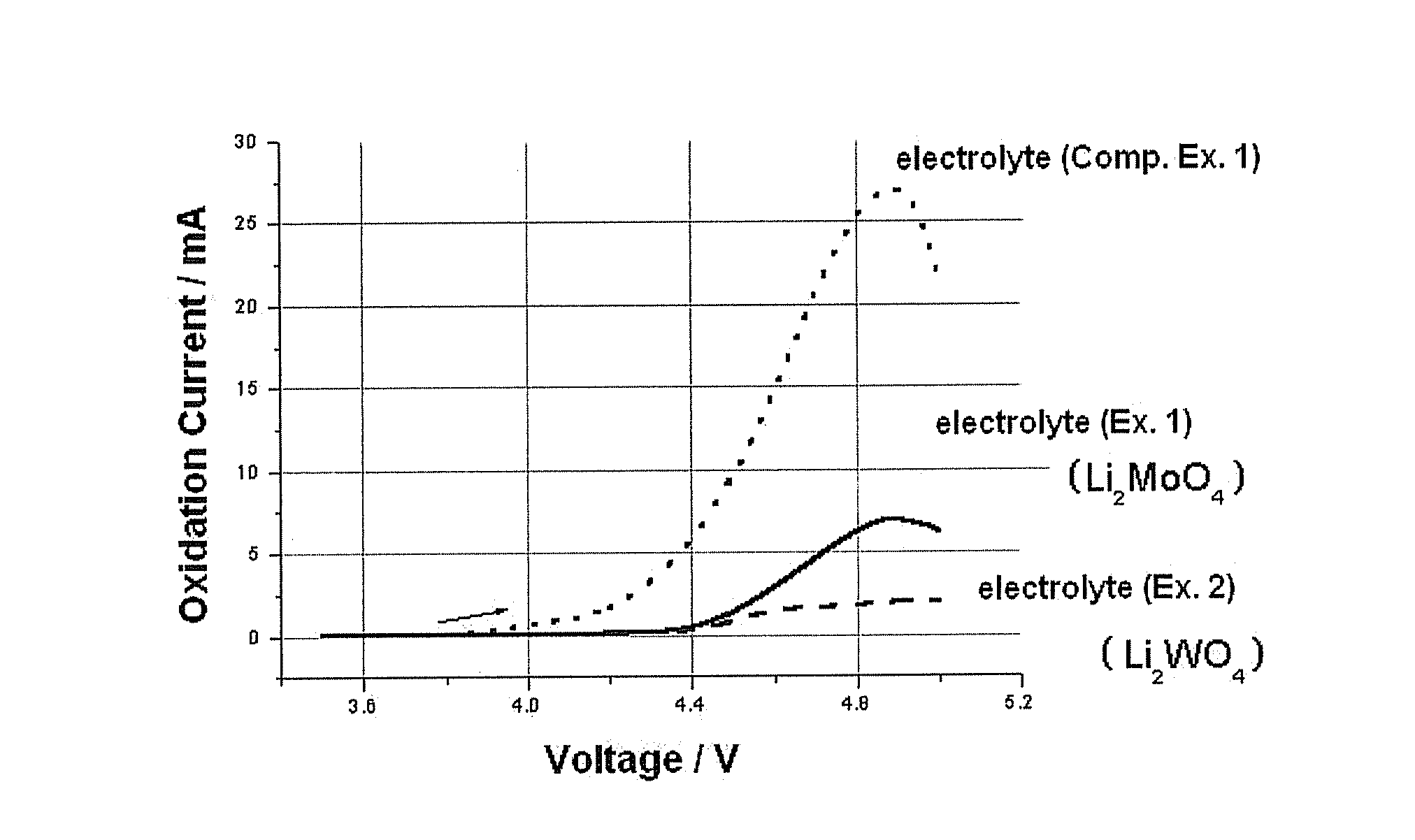Nonaqueous electrolyte comprising oxyanion and lithium secondary battery using the same
a technology of oxyanion and lithium secondary batteries, which is applied in the field of electrolyte, can solve the problems of battery quality degradation, battery damage, metal materials showing a great possibility of corrosion, etc., and achieve the effect of preventing corrosion of metallic cans
- Summary
- Abstract
- Description
- Claims
- Application Information
AI Technical Summary
Benefits of technology
Problems solved by technology
Method used
Image
Examples
example 1
[0034]LiCoO2 was provided as a cathode active material. Next, 90 wt % of LiCoO2, 5 wt % of Super-P as a conductive agent and 5 wt % of PVDF (polyvinylidene difluoride) as a binder were mixed, and then the resultant mixture was added to NMP (N-methyl-2-pyrrolidone) as a solvent to form cathode slurry. The slurry was applied on an aluminum (Al) collector to form a cathode. Then, lithium metal as an anode and the cathode formed as described above were used to manufacture a cylindrical battery. As an electrolyte, EC / EMC solution containing 1M LiPF6 was used, and 0.5 wt % of Li2MoO4 was added to the electrolyte.
example 2
[0035]Example 1 was repeated to manufacture a cylindrical lithium secondary battery, except that Li2WO4 was used instead of Li2MoO4.
PUM
| Property | Measurement | Unit |
|---|---|---|
| voltage | aaaaa | aaaaa |
| oxidation initiation voltage | aaaaa | aaaaa |
| temperature | aaaaa | aaaaa |
Abstract
Description
Claims
Application Information
 Login to View More
Login to View More - R&D
- Intellectual Property
- Life Sciences
- Materials
- Tech Scout
- Unparalleled Data Quality
- Higher Quality Content
- 60% Fewer Hallucinations
Browse by: Latest US Patents, China's latest patents, Technical Efficacy Thesaurus, Application Domain, Technology Topic, Popular Technical Reports.
© 2025 PatSnap. All rights reserved.Legal|Privacy policy|Modern Slavery Act Transparency Statement|Sitemap|About US| Contact US: help@patsnap.com


